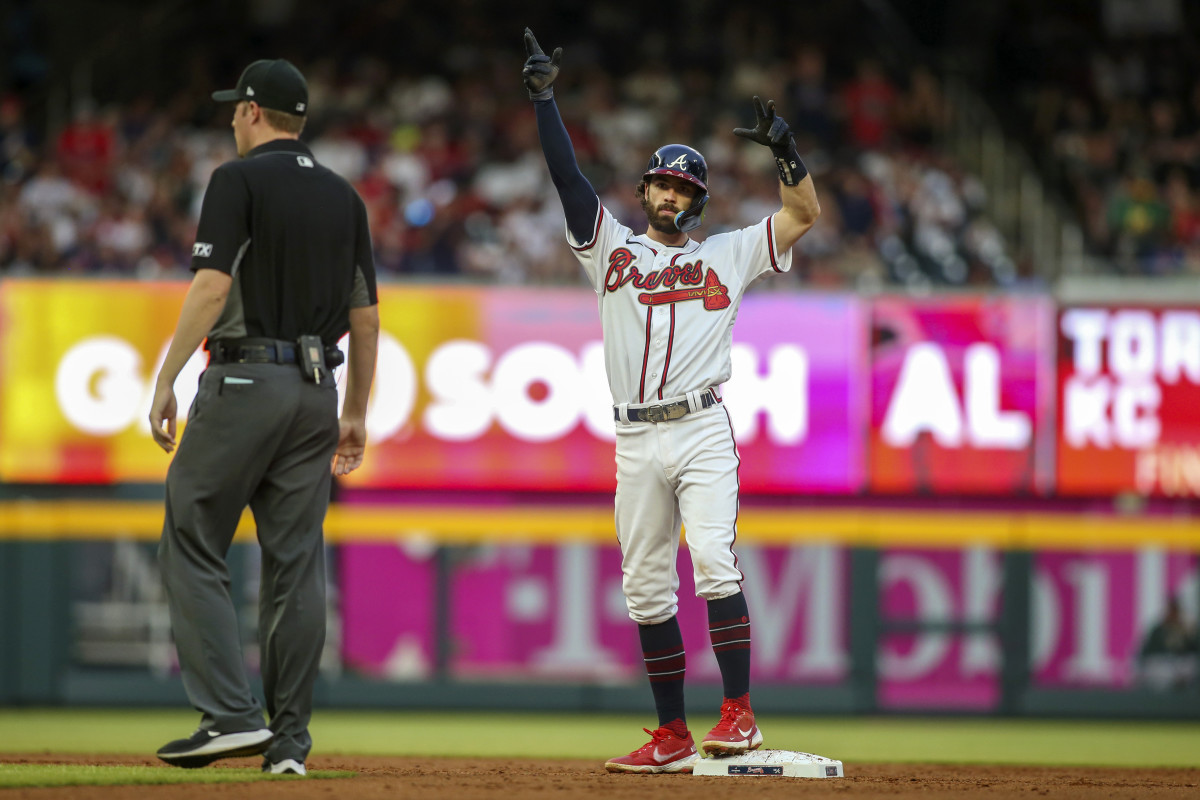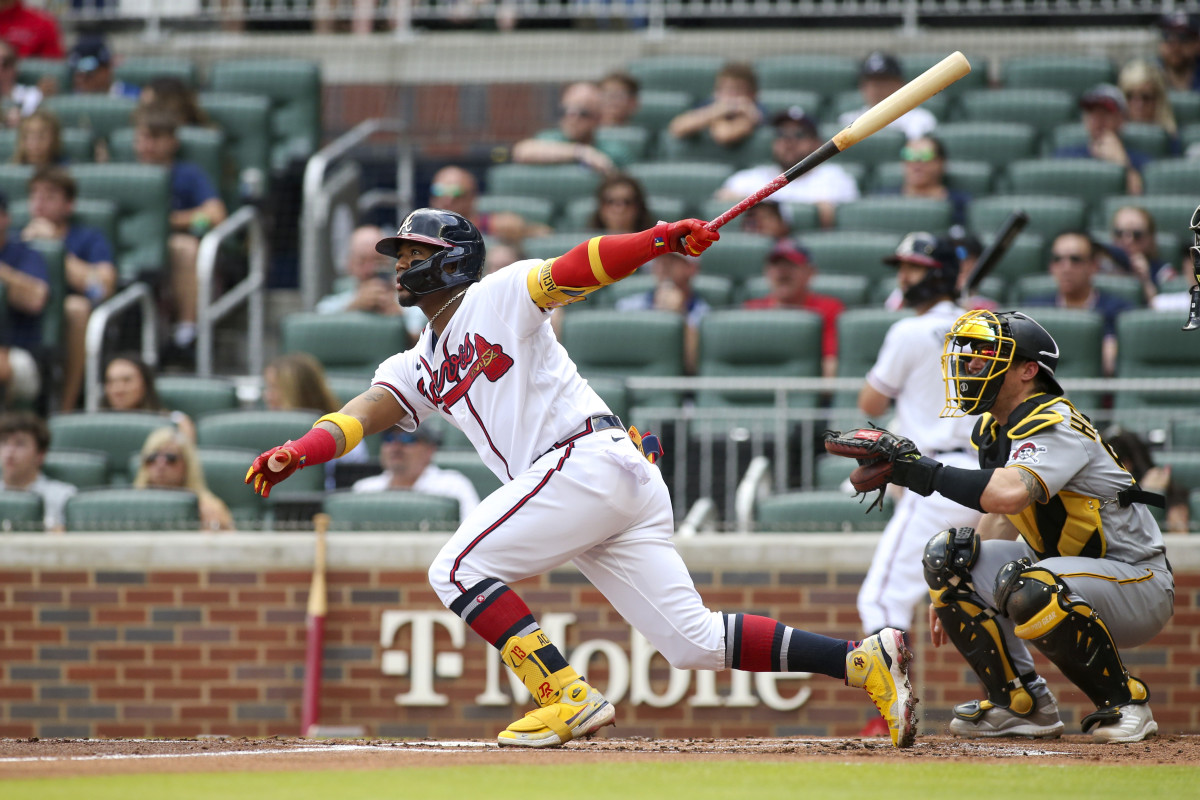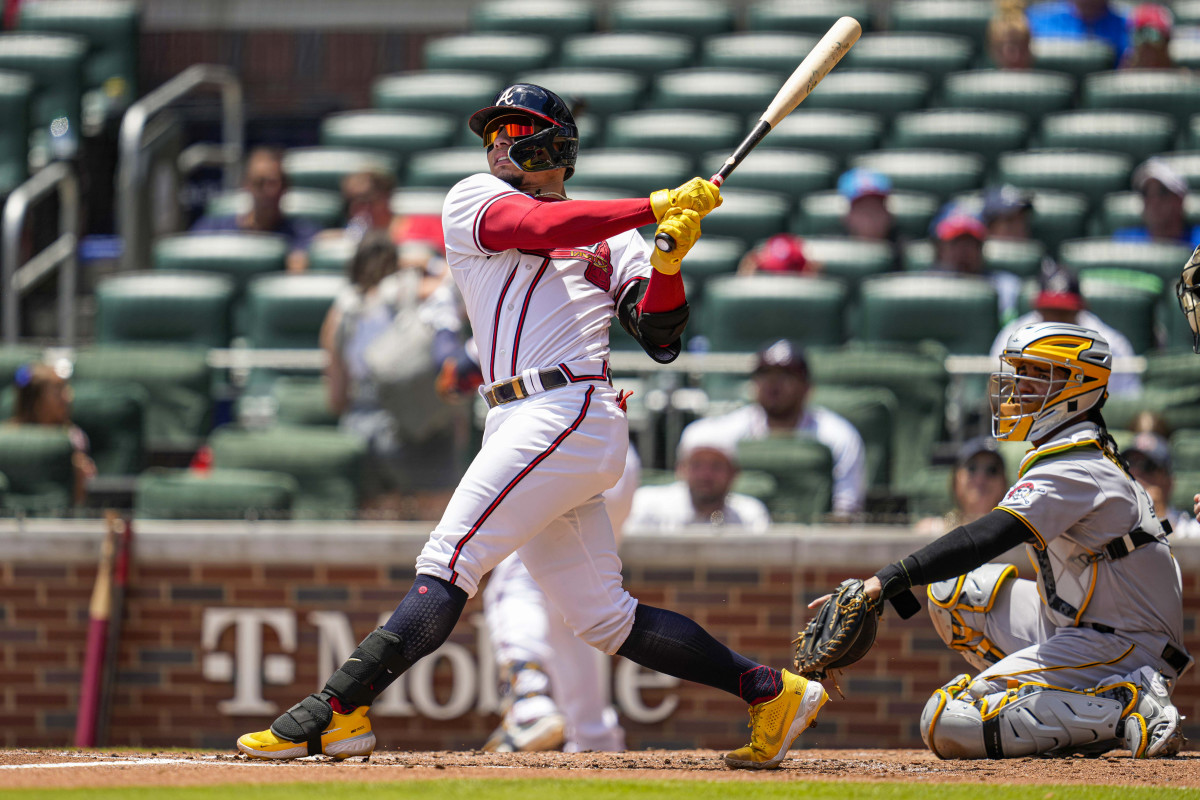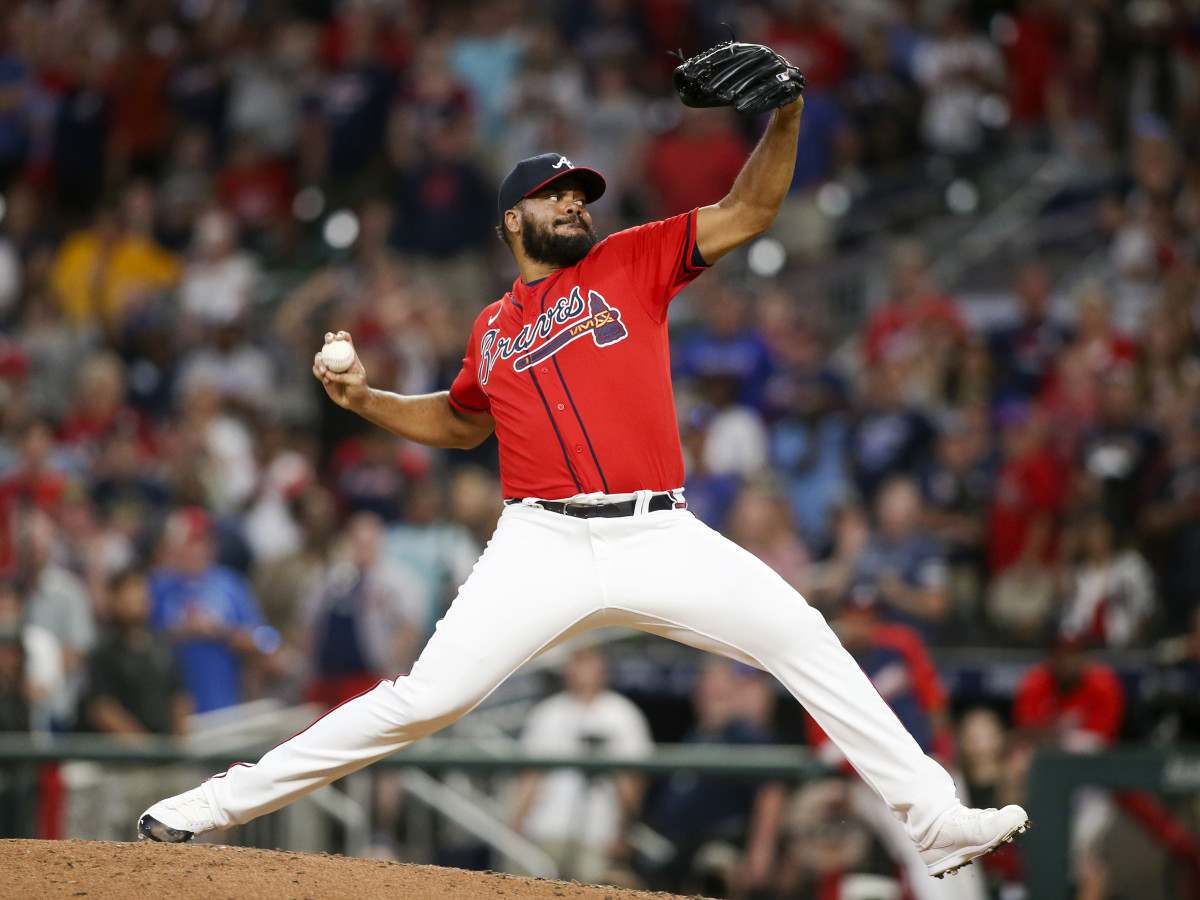Breaking Down the Four Key Factors of the Braves’ Winning Streak

Welcome to The Opener, where every weekday morning during the regular season you’ll get a fresh, topical story to start your day from one of SI.com’s MLB writers.
At the dawn of June, the defending World Series champions didn’t resemble a likely candidate to reel off the league’s longest winning streak of the season. After blowing a 6–0 lead against Arizona in an 8–7 loss on May 31, the Braves were 23–27 with a -16 run differential, 10.5 games behind the Mets in the NL East and five games out of a playoff spot. It was perhaps the low point of what’d quickly become a disappointing campaign, handing their rivals in New York the third-largest division lead at the end of May in the divisional era (since 1969).
Since the calendar turned, however, Atlanta (36–27) hasn’t lost. Its 13-game winning streak has more than halved its divisional deficit and built a two-game lead on the Brewers for the NL’s last wild-card spot. The Braves’ odds of earning a top-two seed and first-round playoff bye have more than quadrupled to 28.7%, per FanGraphs, while their chances of winning the NL East have doubled (16.5% to 33.0%) and their playoff odds have increased from 60.4% to 83.9%. They’ve also become the first team to win at least 13 straight games in their title-defense season since the 1954 Yankees.
Braves players have credited a rare meeting called by manager Brian Snitker on the morning of June 1 as the impetus for the club’s turnaround. While that certainly may have played a part, let’s highlight the on-field changes that have sparked Atlanta’s charge.

A soft schedule
It has to be said that Atlanta’s winning streak has come against the Diamondbacks, Rockies, A’s, Pirates and Nationals. Those are three last-place teams (Colorado, Oakland and Washington), a third-place club (Pittsburgh) with the sport’s worst run differential (-103) and a fourth-place one with a sub-.500 record (Arizona).
You can only play the teams in front of you, though—and the Braves deserve extra credit for demolishing any team to cross them during the win streak. Atlanta has outscored its opponents 93–39, with a league-best 7.2 runs per game, to go along with a league-best 2.81 FIP and 2.78 ERA (fifth in MLB).
Let’s also not forget that just a couple of weeks ago the Dodgers were swept by the Pirates. Every game is difficult at the major league level, even if it hasn’t looked like that’s been the case for the Braves as of late.

Hacktastic, homer happy hitters
The Braves lead MLB with 32 home runs this month, which has shot them up to No. 2 in MLB this year with 94. They’re also up to second in team OPS (.755) behind only the Yankees. Everyone has been chipping in—quite literally, every position player. All 12 Braves to make a plate appearance this month have launched a long ball in June after Orlando Arcia did so Tuesday. Arcia was making his first start since starting second baseman Ozzie Albies was placed on the 60-day injured list with a fractured foot.
While some may worry Atlanta could fade without the two-time All-Star, who last year was part of the second infield in MLB history to feature four 25-home run hitters, that shouldn’t be a huge concern. Nine Braves have a wRC+ above 100 this month (indicating above-average play on offense), led by catcher Travis d’Arnaud’s 222 mark, and nine players have been worth at least 1.0 bWAR so far (five hitters, four pitchers)—and Albies isn’t included in either of those groups amid his down year.
Ronald Acuña Jr.’s return from a torn ACL in late April has certainly helped matters—he ranks eighth in the NL with a 157 wRC+ since the start of May—but he’s far from the only difference maker. Adam Duvall has emerged from a season-long slump to hit a team-high five home runs during the winning streak, and Dansby Swanson has continued his excellent platform year, ranking third in the NL in fWAR since May 1. d’Arnaud has been pushed by his backup and part-time DH William Contreras, who’s been better at the dish than anyone projected. He’s slashing .292/.376/.674 and has nine home runs, tied for third on the team, in just 27 games. His 185 wRC+ trails only Cardinals first baseman Paul Goldschmidt among NL hitters with at least 100 plate appearances. (Side note: the elder Contreras, Cubs All-Star catcher Willson, ranks fourth with a 166 wRC+. Perhaps the brothers are sharing tips on family calls.)
All this has been accomplished despite Atlanta’s penchant for striking out. Braves hitters lead the majors with 595 strikeouts, and were striking out at an MLB-high 26.4% clip entering the streak. They’ve reduced that to a respectable 20.8% rate in June without abandoning their free-swinging ways, as their 53.0% overall swing rate, 77.1% zone-swing rate and 37.5% outside zone-swing rate in June are all tops in the sport.

Another outfield makeover
Last year, Atlanta famously remade its outfield on the fly at the trade deadline en route to the World Series. While the Braves haven’t gone and acquired three new starters in one fell swoop this season, they have made a positional adjustment that’s helped out on multiple fronts.
Duvall, primarily a corner outfielder throughout his career, started in center field for the season’s first two months, and the 2021 Gold Glove winner fared well out there by the metrics. But he struggled at the plate, and Snitker figured the extra running on defense was putting undue stress on the 33-year-old’s legs and hurting him on offense. With April call-up Travis DeMerritte crashing back to earth after a fast start, Atlanta sent him down on May 28 and called up top outfield prospect Michael Harris II, giving him the starting center field job and pushing Duvall to left field and Marcell Ozuna’s noodle of an arm to the DH slot.
Harris, the youngest person in the majors by six days to Rays wunderkind Wander Franco, has more than proven up to the task so far. The 21-year-old is slashing .317/.338/.540, and FanGraphs grades him as both Atlanta’s most valuable baserunner and fielder since his promotion, as well as their second-most valuable position player overall, just a hair behind Swanson.

The league’s best bullpen, or close to it
Remember how I mentioned the Braves have struck out more than any other team, and cranked homers more than any team except the Yankees? Well, interestingly, Braves pitchers also lead MLB in strikeouts (590) as well as home run rate (0.8 HR/9 IP), and the bullpen has carried most of the weight from a statistical standpoint. Atlanta’s relievers rank first in fWAR (4.3), FIP (2.85), strikeout rate (28.2%) and context neutral wins (3.6), while ranking in the top five league-wide in ERA (2.95), WHIP (1.12) and batting average against (.209).
Those developments are especially notable because three of the four bullpen arms that primarily fueled Atlanta’s 2021 World Series run have been injured, ineffective or both. After becoming just the second reliever ever to allow zero runs in 11 postseason innings last fall, Will Smith has declined from even his shaky form last regular season, walking hitters at a career-high rate and striking out fewer than he ever has as a reliever. Tyler Matzek, who provided perhaps the pitching highlight of the postseason by escaping a perilous jam in Atlanta’s NLCS-clinching win, saw his past control issues resurface before going on the injured list with shoulder inflammation. Luke Jackson underwent Tommy John surgery in April.
Texan southpaw A.J. Minter is the only one of the so-called Night Shift who’s matched his 2021 postseason while leading MLB with 15 holds. Minter, who hasn’t allowed a home run all year, has been charged with an earned run in just two of his 28 appearances, and not since April 24.
Fortunately for Atlanta, the rest of the relief corps has helped pick up the slack. Kenley Jansen has converted 18 of 21 save opportunities, racking up 38 strikeouts with eight walks in 27 ⅔ innings. Fellow free agent signing Collin McHugh has been a solid setup option. Rookie Spencer Strider, who jumped from Single A to the majors for a quick cameo last year, was dominant enough to earn a promotion to the rotation. Darren O’Day has done what he has for more than a decade, retiring righties at an acceptable rate. Jesse Chavez, one of the men furthest down on the pecking order, has an absurd 11.5 strikeout-walk ratio in 20 ⅓ innings.
Truth be told, Atlanta’s rotation has been pretty darn good lately, too. It kind of has to be for a team to win 13 games in a row. But in that case we’re talking about starters having two or three good outings. The Braves bullpen’s improvements has been a bigger factor, and one that looks more likely to continue long after Atlanta’s remarkable streak is over.
More MLB Coverage:
• Don’t Underestimate Jose Ramirez and the Guardians
• The Unexpected Rise of Taylor Ward
• Manny Machado Is Letting His Play Do the Talking
• Five-Tool Newsletter: Tony La Russa’s Latest Illogical Decision
